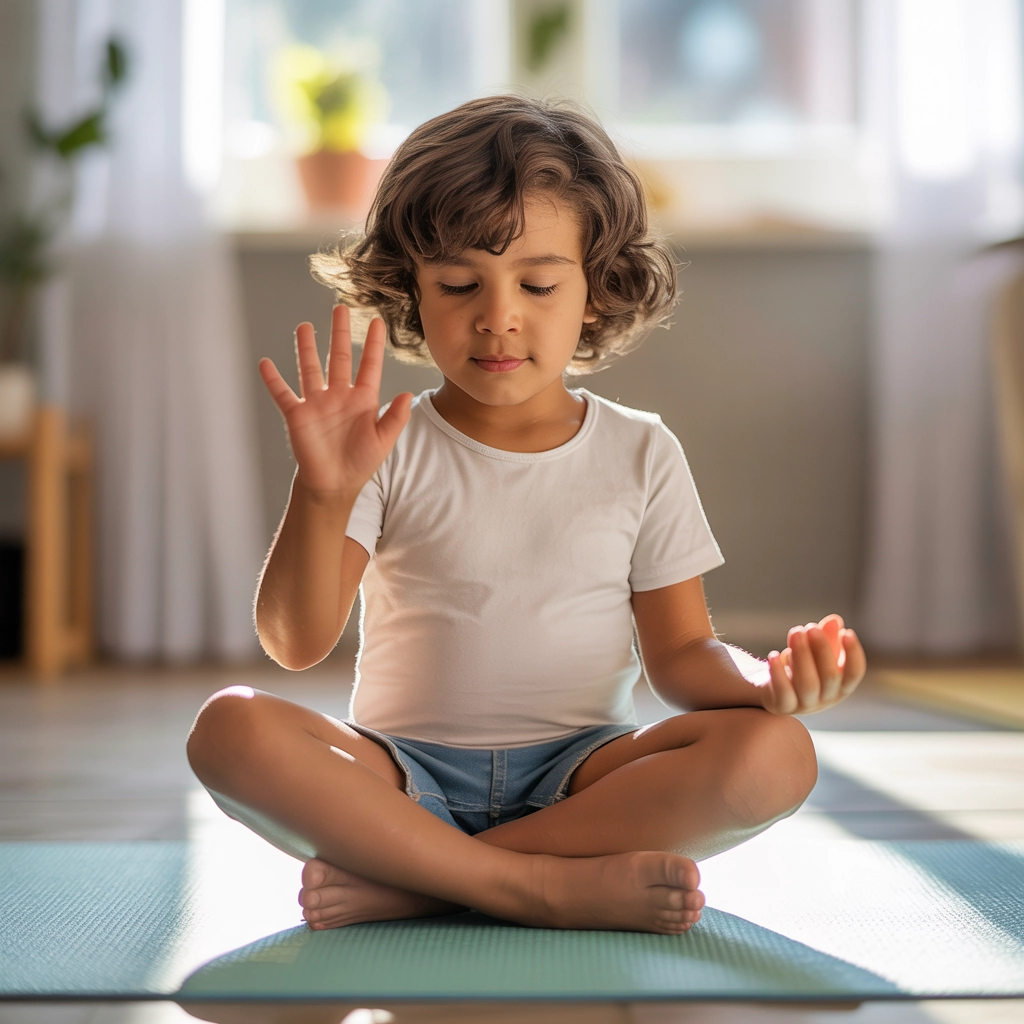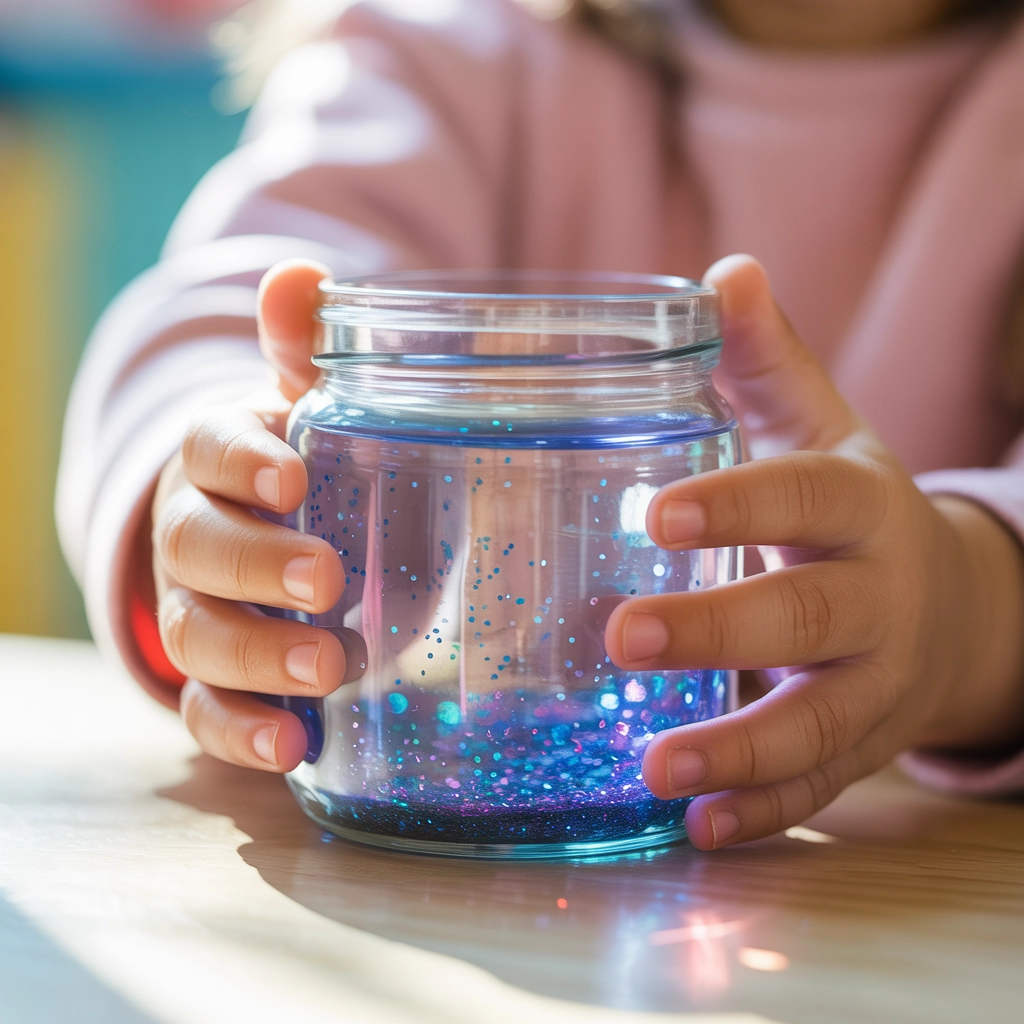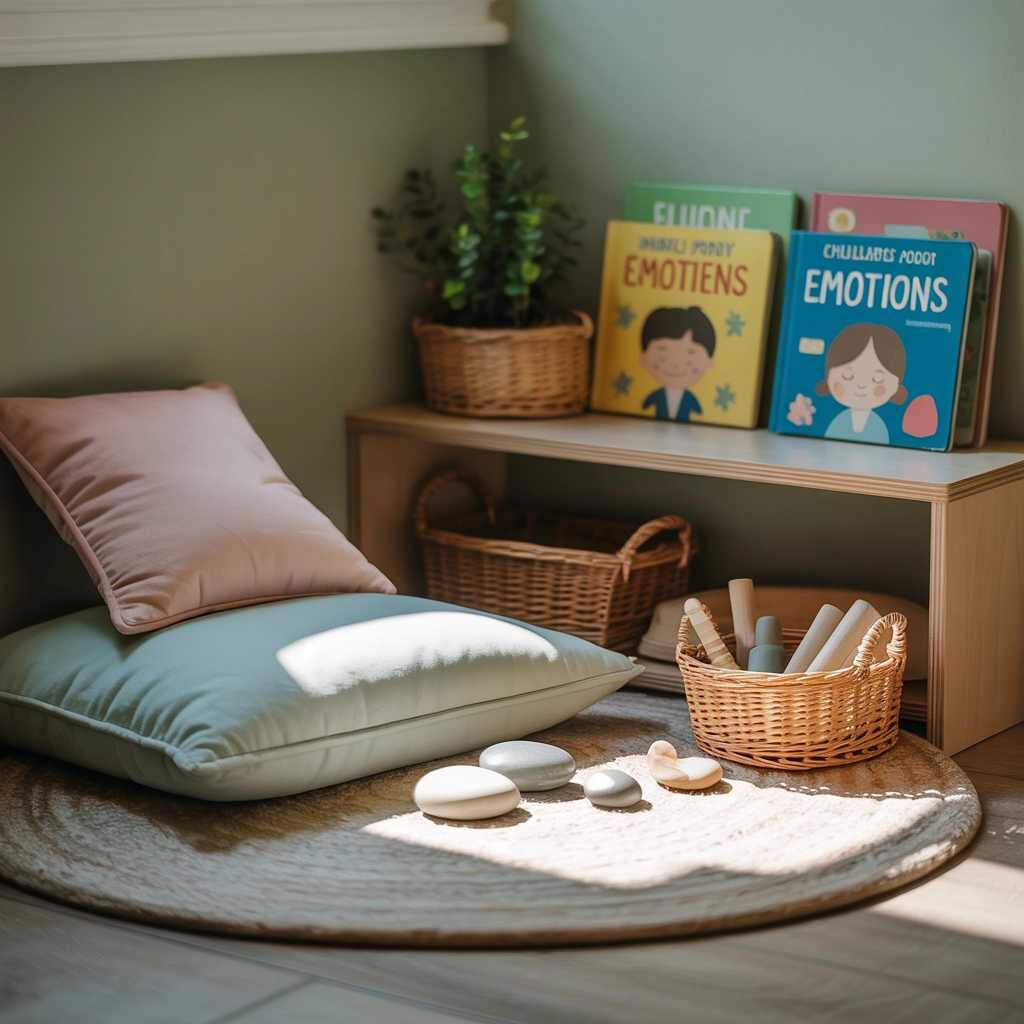Breath-Based Activities: The Foundation of Calm
The breath is our constant companion and the perfect anchor for mindfulness practice. These simple breathing exercises can be introduced to children as young as three:
Balloon Breathing
Have children place their hands on their tummies and imagine there's a balloon inside. As they breathe in, the balloon inflates (tummy expands); as they breathe out, it deflates (tummy contracts). This visualisation makes diaphragmatic breathing accessible and fun.
Five-Finger Breathing
Children trace their hand with the index finger of their other hand. As they trace up a finger, they breathe in; as they trace down, they breathe out. This tactile approach helps them slow down their breath while giving them something concrete to focus on.
Weather Breathing
Invite children to notice what "weather" is happening inside them. Are they feeling stormy, sunny, or somewhere in between? Then guide them to use their breath to create calmer weather – long, slow exhales help calm the internal storms.

Sensory Exploration: Awakening Mindful Awareness
Sensory activities naturally bring children into the present moment and help them develop focused attention:
Mindful Listening Walk
Take a "listening walk" indoors or outside, where the only goal is to notice sounds. How many different sounds can the children identify? This activity sharpens observation skills and grounds children in their environment.
Texture Treasure Hunt
Collect items with different textures (smooth stones, rough pine cones, soft fabric). Invite children to explore these with their fingers, describing what they feel. For added challenge, try this as a "feely bag" activity where they can't see the objects.
Mindful Eating
Transform snack time by exploring a small piece of food (a raisin, segment of orange, small biscuit) with all five senses before eating. What does it look like? Smell like? Feel like? Sound like when squeezed gently? And finally, what does it taste like when eaten slowly and mindfully?
Movement-Based Mindfulness: Honouring the Need to Wiggle
Children naturally live in their bodies – these activities work with that tendency rather than against it:
Yoga Shapes
Simple yoga poses like tree, mountain, or cat-cow help children connect with their bodies while developing balance and focus. No need for perfect form – the emphasis is on how the poses feel.
Mindful Movement Freeze
Play music and have children move freely. When the music stops, they freeze and notice: How does my body feel right now? What sensations can I notice? Where am I holding tension? This combines the joy of movement with moments of still awareness.
Walking Like Different Animals
Invite children to move like various animals – the slow, deliberate steps of a tortoise; the light, bouncy hops of a rabbit; the powerful strides of a lion. This encourages body awareness and control over movement speed.
Emotional Literacy: Naming to Tame Feelings
Mindfulness helps children develop emotional intelligence through activities like:
Feelings Weather Report
Create a simple chart where children can indicate their emotional "weather" throughout the day. This normalises the full range of emotions and helps children recognise that feelings, like weather, are always changing.
Glitter Jar Meditation
Make a "mind jar" by filling a plastic bottle with water, glue, and glitter. When shaken, it represents a mind full of busy thoughts and big feelings. As the glitter settles, children can see how their minds can settle too with some quiet breathing.

Kindness Practice
Guide children to send kind wishes first to themselves ("May I be happy"), then to someone they love, someone they don't know well, someone they find difficult, and finally to all beings. This builds compassion and emotional resilience.
Integrating Mindfulness into Daily Routines
The most effective mindfulness practice is consistent rather than occasional. Here's how to weave it into everyday moments:
Morning Check-In
Start the day with a brief body scan or breathing exercise to set a mindful tone. Ask: "How is your body feeling today? What do you need to feel your best?"
Transition Moments
Use mindful moments to help children transition between activities. Three deep breaths before moving from playtime to lunch, or a quick "shake out" of wiggles before sitting down to listen to a story.
Bedtime Wind-Down
Create a calming bedtime routine that includes a body relaxation ("tense and release" exercise starting from toes and moving up to head) or a guided visualisation of a peaceful place.
Supporting Children's Practice: Tips for Adults
As guides on the mindfulness journey, we can help children most effectively when we:
Model Mindfulness Ourselves
Children learn by watching us. When you pause to take a deep breath during a frustrating moment, you're teaching more powerfully than any formal lesson could. I've found in my practice that children are incredibly perceptive - they notice when we're genuinely practicing what we preach!
Use Child-Friendly Language
Instead of abstract concepts, use concrete, playful language. "Spider-Man attention" might resonate more than "focused awareness" with young superhero fans. Try creating mindfulness cues that connect to their interests - "Elsa calm breathing" or "ninja focus mode" can make these practices instantly more engaging.
Honour Individual Differences
Some children will engage with movement-based practices, others with sensory exploration. Follow their lead and offer variety. Remember that neurodivergent children might need adaptations - shorter sessions, more movement breaks, or different sensory options can make mindfulness accessible to everyone.

Keep It Light and Voluntary
Mindfulness works best as an invitation, not an obligation. Short, playful sessions are more effective than forced longer ones. In my years as a hypnotherapist and EFT practitioner, I've seen how resistance builds when children feel pressured. Instead, spark their curiosity and let their natural enthusiasm grow the practice.
Creating Space for Practice
Whether at home or in the classroom, the environment can support mindfulness:
Dedicated Calm Space
Create a small, cosy corner with cushions, a few books, perhaps a snow globe or glitter jar, and simple fidget tools. This gives children a place to practise self-regulation.
Visual Reminders
Simple posters showing breathing techniques or emotion faces serve as helpful cues for independent practice.
Nature Connection
Whenever possible, bring mindfulness outdoors. The natural world offers rich sensory experiences that naturally invite presence.
Growing the Practice Together
Remember that mindfulness is not about perfection but presence. Both adults and children will have distracted days – that's part of being human. The practice is noticing when the mind has wandered and gently bringing attention back, again and again.
Start small, perhaps with one minute of mindful breathing at the beginning of the day. Gradually increase as children develop the capacity for longer periods of attention. Celebrate the small wins – the child who remembers to take a deep breath during a frustrating moment is demonstrating real progress!
In my coaching work, I've seen how these tiny moments of awareness can snowball into significant emotional regulation skills over time. One mother told me her 5-year-old spontaneously used "balloon breathing" during a meltdown at the supermarket - these are the victories worth celebrating!
By introducing these simple practices early, we're giving children valuable tools for emotional regulation, focus, and self-awareness that will serve them throughout their lives. And often, we find that in teaching mindfulness to children, we rediscover its benefits for ourselves as well.
I've witnessed remarkable transformations when children learn these skills early. As both a hypnotherapist and a parent, I've seen how mindfulness creates resilience that carries children through life's challenges with greater ease. These aren't just nice-to-have skills - they're essential tools for navigating our complex world.
If you're interested in deepening your understanding of mindfulness for children and gaining the skills to teach it effectively, keep an eye out for our Mindfulness for Children Instructor Course launching this September. You'll learn how to adapt these practices for different ages and needs, creating a foundation of calm and presence for the children in your care.
Are you already using mindfulness with children at home or in educational settings? We'd love to hear about your experiences.